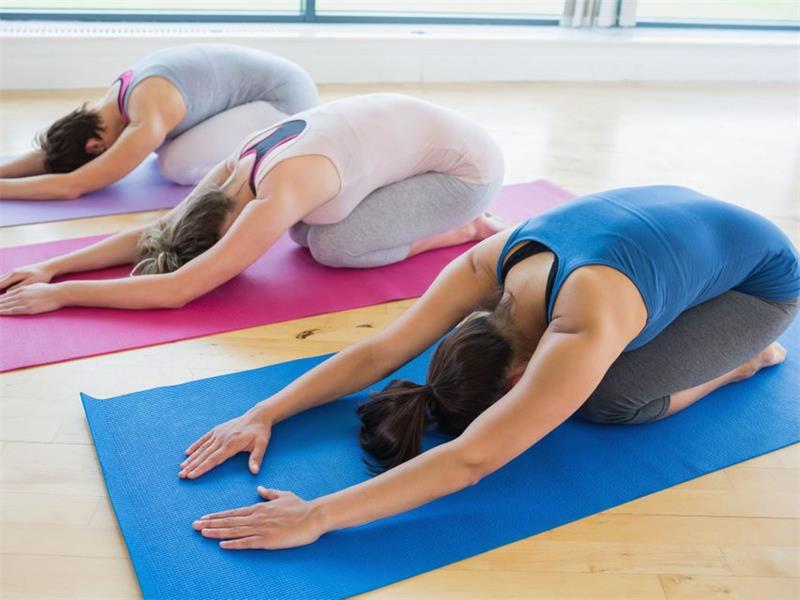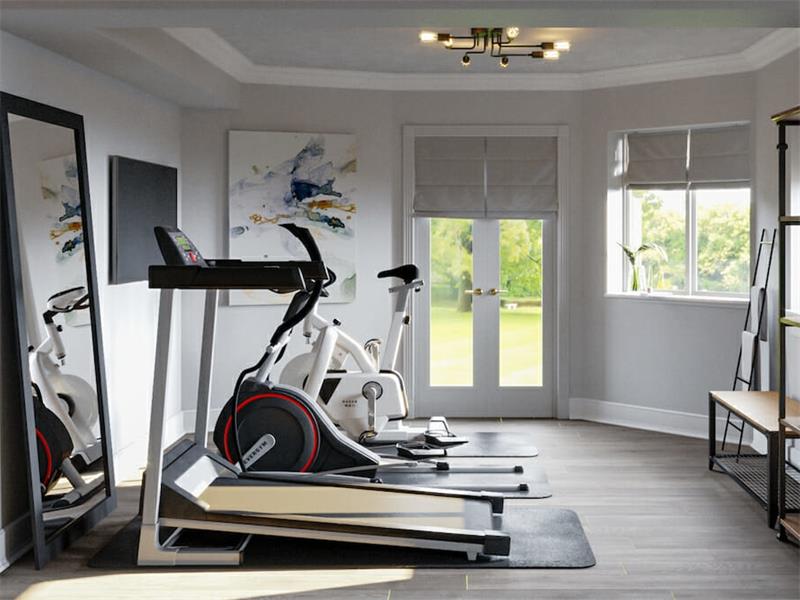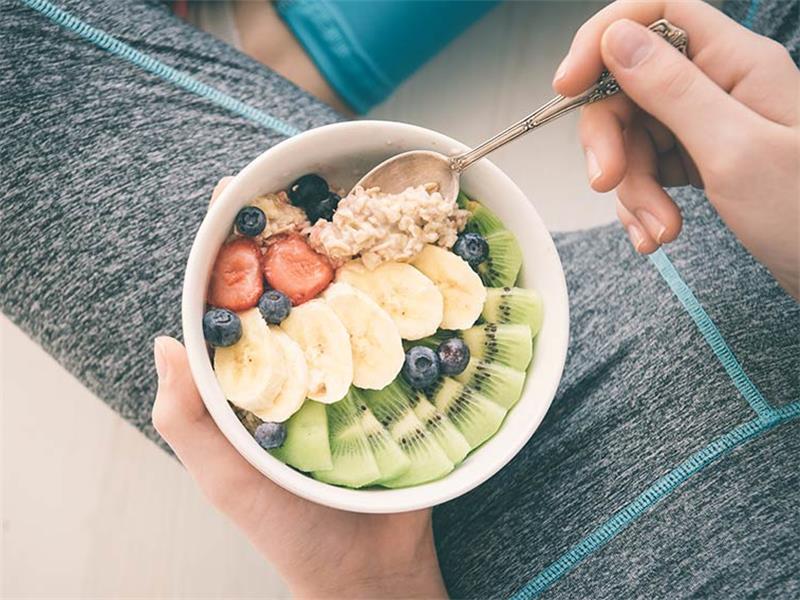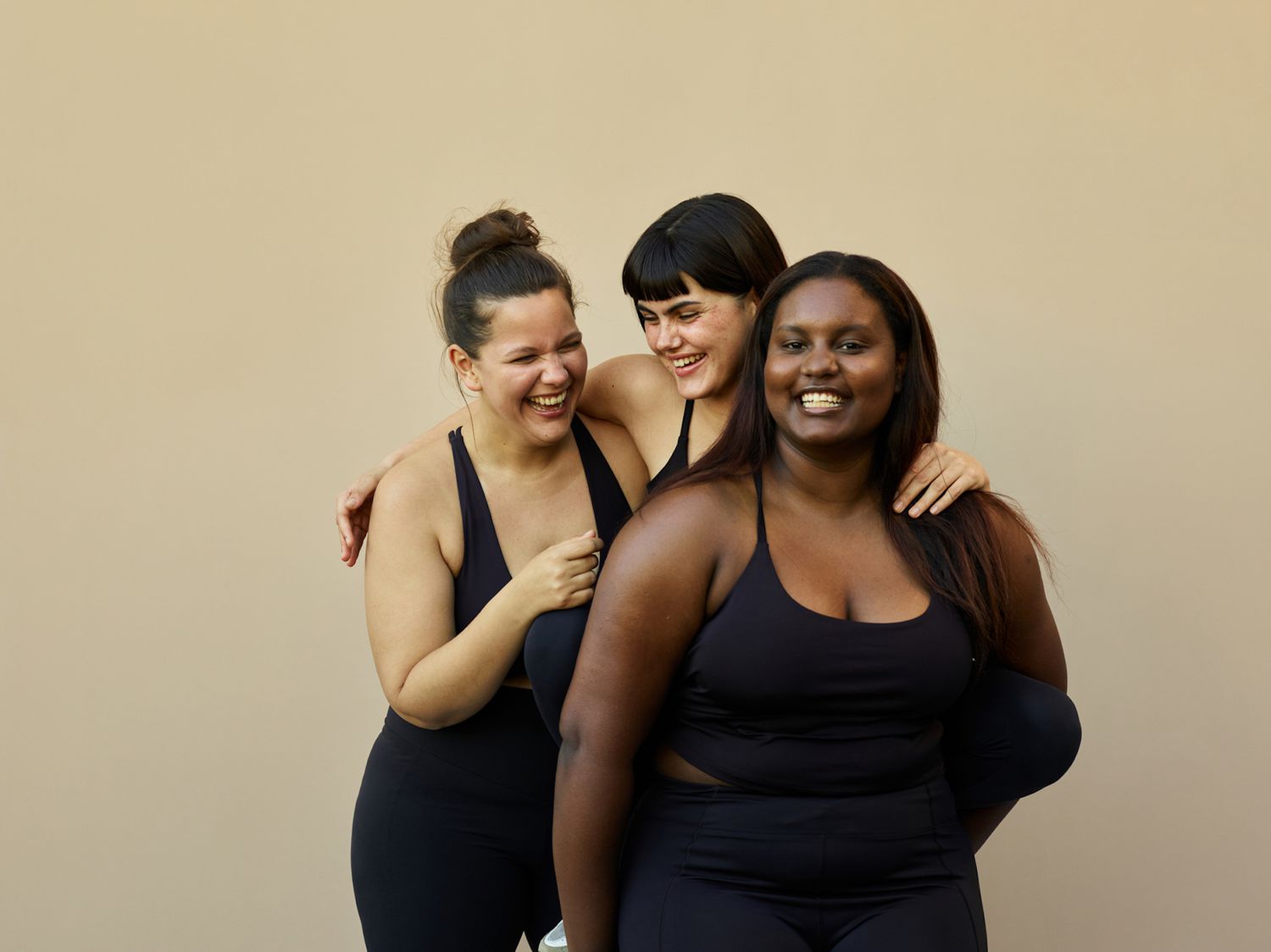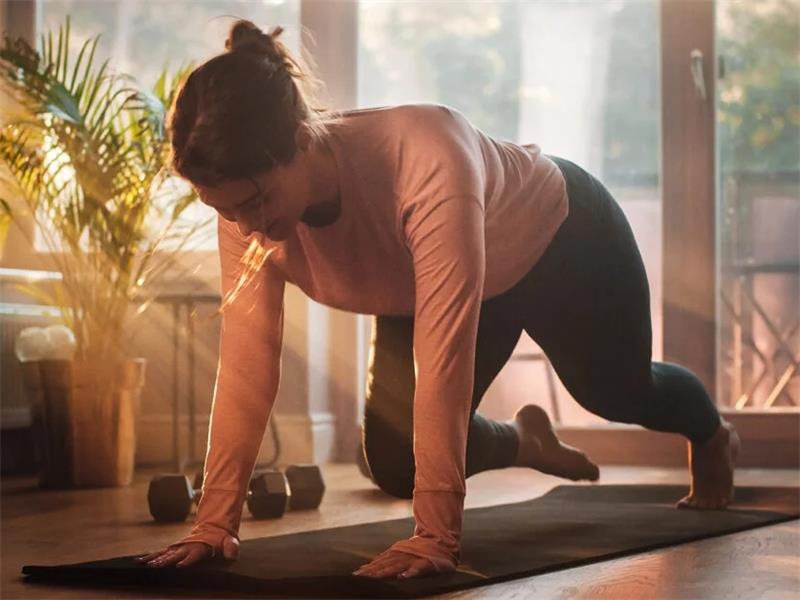Contents
- 1 The Power of Yoga for Stress Relief
- 2 The Benefits of Yoga for Stress Relief
- 3 Incorporating Yoga into Your Daily Routine
- 4 Basic Yoga Poses for Stress Relief
- 4.1 Mountain Pose: Grounding and Centering Pose
- 4.2 Child’s Pose: Calming and Soothing Pose
- 4.3 Downward-Facing Dog: Stretches The Entire Body And Releases Tension In The Back And Neck
- 4.4 Intermediate Yoga Poses for Stress Relief“Yoga is not about touching your toes, it’s about what you learn on the way down.” – Judith Lasater
- 5 Advanced Yoga Poses for Stress Relief
- 6 Breathwork Techniques for Stress Relief during Yoga Practice
- 7 Conclusion
The Power of Yoga for Stress Relief
Are you looking for a way to relieve stress and find inner peace? Yoga might just be the solution you’re looking for.
Yoga is an ancient practice that originated in India thousands of years ago. It is a holistic approach to physical, mental and spiritual well-being.
Today, millions of people around the world practice yoga as a means of reducing stress and improving overall health. Stress is one of the biggest culprits behind many modern-day health problems such as anxiety, depression, and high blood pressure.
While there are many ways to cope with stress such as meditation, exercise, or therapy- yoga stands out because it combines all three in one practice. By incorporating yoga into your daily routine, you can experience significant improvements in both your physical and mental health.
The Benefits of Yoga for Stress Relief
The benefits of yoga extend far beyond just physical fitness. Regular practice can lead to increased strength and flexibility but also brings balance to your mind and soul. A consistent yoga routine can reduce stress levels by lowering cortisol levels- the hormone responsible for triggering the “fight or flight” response in our bodies when we experience stress.
Yoga works on two levels: physical movement (asanas) and breathwork (pranayama). The combination of these two elements has been shown to help regulate our nervous system – calming down our mind during moments when we feel anxious or stressed.
The beauty of yoga lies in its ability to heal from within – something that cannot be achieved through external sources alone like medication or therapy. Practicing different poses over time allows us to better understand our body’s response during moments of tension- both physically and mentally.
Incorporating Yoga into Your Daily Routine
Starting a new habit can be challenging but adding just 20 minutes a day should be doable even within the busiest schedule. Making it a habit to practice yoga at the same time each day can help your body and mind adjust to this new routine.
Whether you’re a beginner or have been practicing for years, there is always something new to learn in yoga. There are many ways to incorporate yoga into your daily routine such as taking online classes, joining a local studio or even just following along with videos on YouTube.
The important thing is not how you do it, but that you stick with it consistently. Incorporating yoga into your daily routine can bring balance and calmness to your life- something we all need more of these days.
So why not give it a try today? Roll out your mat and let’s embark on this journey together!
Basic Yoga Poses for Stress Relief
Mountain Pose: Grounding and Centering Pose
The Mountain pose is the foundation of all standing yoga postures. It is a simple standing posture that requires you to stand upright with your feet firmly planted on the ground, arms resting by your sides, and palms facing outward.
This pose creates a sense of grounding and stability, helping to calm your body and mind. To practice this pose, start by standing at the front of your mat with your feet hip-width apart.
Keep your back straight, shoulders relaxed, and arms at your side. Close your eyes and take a few deep breaths in through your nose and out through your mouth.
As you inhale, imagine energy flowing up through the soles of your feet all the way to the top of your head. As you exhale, feel yourself becoming more grounded and centered.
Child’s Pose: Calming and Soothing Pose
The Child’s pose is a gentle resting posture that helps to release tension in the back, neck, shoulders, hips, and thighs. This pose promotes relaxation by calming down the nervous system.
It is especially helpful for individuals who experience anxiety or stress-related headaches or migraines. To practice this pose, begin on all fours with hands shoulder-width apart on the mat (or floor) and knees hip-width apart.
Slowly lower yourself down to rest on your heels while stretching out both arms in front of you as far as comfortable toward the top of the mat (or floor). Allow gravity to pull you deeper into this restorative posture while taking deep breaths in through the nose for five seconds then exhaling out through pursed lips for ten seconds.
Downward-Facing Dog: Stretches The Entire Body And Releases Tension In The Back And Neck
The Downward-Facing Dog pose is a full-body stretch that helps to release tension in the back, neck, and shoulders. It also strengthens the arms and legs while improving circulation. This pose is perfect for individuals who spend a lot of time sitting or hunched over a computer.
To practice this pose, start on all fours with hands shoulder-width apart and knees hip-width apart. Walk your hands forward about one hand print length then curl your toes under and lift your hips up toward the ceiling forming an inverted V-shape with your body.
Keep your heels down toward the mat (or floor) as much as possible while pushing through both hands to keep lengthening the spine from the tailbone up through to the crown of your head. Take deep breaths in through your nose for five seconds then exhale out through pursed lips for ten seconds.
By practicing these basic yoga poses for stress relief regularly, you can experience a greater sense of calmness and relaxation in both body and mind. They can be incorporated into any yoga routine or done on their own when you need to take a break from daily stresses.
Intermediate Yoga Poses for Stress Relief“Yoga is not about touching your toes, it’s about what you learn on the way down.” – Judith Lasater
Once you have mastered the basic yoga poses, it’s time to move on to the intermediate level. These poses require more strength, flexibility, and concentration.
Practicing these poses regularly can provide a deeper sense of relaxation and calmness. Here are some of the best intermediate yoga poses for stress relief.
Warrior II
Warrior II pose, also known as Virabhadrasana II in Sanskrit, is one of the most iconic yoga postures. It strengthens the legs and opens up the hips while improving focus and stability. This pose teaches us to be grounded and rooted like a warrior while maintaining a relaxed upper body.
To practice Warrior II pose, start by standing at the front of your mat with your feet hip-distance apart. Step back with your left foot and turn it out at a 90-degree angle while keeping your right foot facing forward.
Bend your right knee to create a 90-degree angle with your thigh parallel to the ground. Reach both arms outwards from shoulder height in opposite directions while gazing over your right fingertips.
Triangle Pose
The triangle pose or Trikonasana in Sanskrit is another excellent posture for reducing anxiety levels caused by stress and tension buildup in our daily lives. This pose stretches hamstrings, hips, and spine muscles while relieving tension from shoulders and necks which ultimately relaxes our minds too! Begin this posture by standing straight with feet hip-distance apart then widening them apart from each other about 3-4 feet so that both feet are perpendicular to each other; the front foot pointing towards the front side whereas the back foot pointing towards the sidewall next to you.
Bridge Pose
Bridge pose or Setu Bandha Sarvangasana in Sanskrit is one of the best yoga poses for opening up the chest and heart space, which can lead to increased feelings of calmness and less anxiety. This posture also strengthens the lower back and glutes, improving overall posture. Start by lying on your back with your knees bent and your feet flat on the ground.
Place your arms down by your sides with palms facing down. As you inhale, press down through your feet and lift your hips up towards the ceiling while maintaining a straight line from shoulders to knees.
Incorporating these intermediate yoga poses into your routine will provide immense physical and emotional benefits, helping you to reduce stress levels significantly. Remember, it’s not about perfection but finding peace within yourself through practice.
Advanced Yoga Poses for Stress Relief
Headstand: The Ultimate Stress-Busting Pose
For those with a regular yoga practice, headstands are considered the ultimate stress-busting pose. Inversions like headstands increase blood flow to the brain, improving circulation and oxygenation which can lead to a sense of clarity and calmness. Headstands also strengthen your core muscles, which can relieve tension in your lower back and neck, areas where we often carry stress.
While a headstand may seem intimidating at first, with proper preparation and guidance from an experienced teacher, anyone can master this pose. To begin practicing headstands safely, start by building up strength in your shoulders and core with poses like Dolphin Pose or forearm plank.
Once you feel confident and strong enough to try a headstand, use a wall for support as you work on getting upside down. As you hold the pose for longer periods of time, focus on deep breathing to calm the mind.
Shoulder Stand: An Inversion for Calming the Nervous System
Another inversion that can be helpful for relieving stress is Shoulder Stand. This pose involves balancing on the shoulders while lifting the hips up towards the ceiling.
Shoulder Stand is known to stimulate the thyroid gland which regulates metabolism and energy levels in our bodies. When this gland functions optimally it helps reduce feelings of fatigue and depression.
In addition to its physical benefits, Shoulder Stand is also an incredibly calming pose that can help ease anxiety by calming the nervous system. By bringing awareness to your breath while holding this pose you may find yourself feeling more centered and relaxed.
Lotus Pose: A Symbol of Inner Peace
Lotus Pose is another advanced yoga posture that promotes inner peace by reducing stress levels. Sitting in Lotus involves crossing your legs while keeping your spine straight so that you look like a statue. This pose is often used for meditation as it can help calm the mind and improve focus.
To achieve Lotus Pose, start by sitting cross-legged on a cushion or blanket. If your knees are elevated off the ground, use additional support to ease into the pose.
As you practice this posture more regularly it will become easier to sit with your spine long and your breath steady. Remember that yoga is not about achieving perfection but rather working towards progress, so be patient with yourself throughout the process.
Breathwork Techniques for Stress Relief during Yoga Practice
Deep Breathing (Pranayama): Slowing Down the Heart Rate and Reducing Stress Levels
Pranayama is a Sanskrit term that refers to various breathing techniques used in yoga practice. Deep breathing exercises, or pranayama, have been shown to slow down the heart rate and reduce stress levels.
This type of breathwork involves taking slow, deep breaths through the nose, filling up the lungs completely, holding for a few seconds and then slowly exhaling through the nose. One easy deep breathing technique is called “Equal Breathing.” To do this exercise, sit in a comfortable position with your eyes closed.
Inhale through your nose for a count of four and exhale through your nose for a count of four. Repeat this cycle for several minutes until you feel more relaxed.
Another popular pranayama technique is called “Ujjayi Breathing,” which involves inhaling slowly and deeply through the nose while slightly constricting the throat muscles to create an ocean-like sound in the back of your throat. This type of breathing can be particularly helpful when you are feeling anxious or stressed.
Alternate Nostril Breathing (Nadi Shodhana): Balancing Both Hemispheres of the Brain; Reducing Anxiety
Nadi Shodhana, also known as Alternate Nostril Breathing, is another popular pranayama technique used to reduce stress and anxiety levels. This technique involves using one hand to close off one nostril while inhaling through the other nostril. Then switch sides by closing off that nostril and exhaling through the opposite side.
Studies have shown that practicing Nadi Shodhana can help balance both hemispheres of the brain by increasing oxygen flow throughout all parts of it, including the amygdala, which is responsible for regulating emotions like fear and anxiety. By regulating the breath through this technique, you can calm your mind and reduce stress levels.
To get started with Nadi Shodhana, sit in a comfortable position with your eyes closed. Use your right hand to close off your right nostril and inhale slowly through the left nostril.
Hold for a few seconds, then use your thumb to close off your left nostril and exhale through the right nostril. Repeat this cycle several times before switching sides.
Conclusion
Yoga is a powerful tool for managing stress and anxiety. Incorporating a daily yoga practice can have significant benefits for both physical and mental health.
By regularly practicing yoga poses, we can reduce stress levels, improve relaxation, and achieve a greater sense of inner peace. Throughout this article, we explored various yoga poses that can help alleviate stress.
Starting with basic poses such as Mountain Pose, Child’s Pose, and Downward-Facing Dog, we progressed to more intermediate poses including Warrior II, Triangle Pose, and Bridge Pose. For those seeking a greater challenge, advanced poses such as Headstand, Shoulder Stand and Lotus Pose were also covered.
Breathwork techniques are an essential component of any yoga practice for stress relief. By incorporating deep breathing practices like Pranayama or Alternate Nostril Breathing into your routine you can enhance the physical benefits of the poses while simultaneously calming your mind.
By practicing these yoga poses regularly along with breathwork techniques you can manage stress levels in everyday life more effectively. It is essential to remember that it takes time to build up strength and flexibility in the body.
Therefore be patient with yourself throughout the process of integrating Yoga into your regular routine. With consistent practice over time you will see tremendous progress physically and emotionally – don’t give up when you don’t see immediate results!

